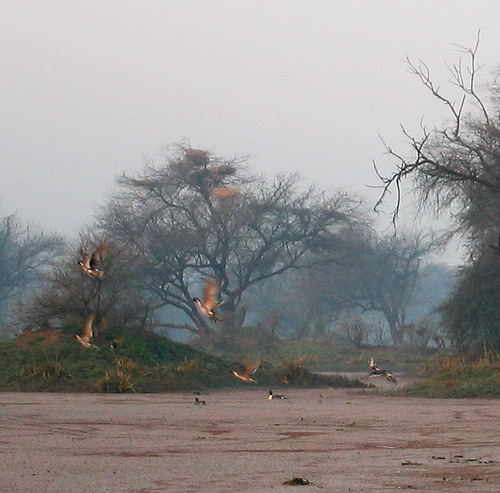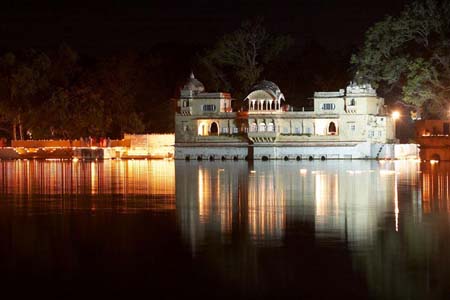
Sacked by Mohammed of Ghori on one of his periodic forays from Afghanistan, and later favoured by the mighty Mughals, Ajmer once had considerable strategic importance. One of the first contacts between the Mughals and the British occurred in Ajmer, when Sir Thomas Roe met Jehangir here in 1616. Later the Scindias took the city, and in 1818 it was handed over to the British, becoming one of the few places in Rajasthan that they directly controlled.
The British set up Mayo College here in 1875, a prestigious school on sprawling grounds, exclusively for the Indian nobility. Today it’s open to all boys (whose parents can afford the fees).
Alwar
Dusty Alwar has a fine palace and some colourful bazaars. It was once an important Rajput state, emerging in the 18th century under Pratap Singh, who pushed back the rulers of Jaipur to the south and the Jats of Bharatpur to the east, and who successfully resisted the Marathas. It was one of the first Rajput states to ally itself with the fledgling British empire, although British interference in Alwar’s internal affairs meant that this partnership was not always amicable.
It’s the nearest town to Sariska Reserve.
Bharatpur

In the 17th and 18th centuries, Bharatpur was an important stronghold of the Jats, who retained their autonomy through their prowess in battle and marriage alliances with Rajput nobility. They successfully opposed the Mughals on several occasions, and their 18th-century fort here withstood an attack by the British in 1805 and a long siege in 1825. This siege led to the signing of the first treaty of friendship between the northwest Indian states and the East India Company. The Jat influence and the town’s position next to the border with Uttar PradeshRajasthan. means that it resembles the towns in the neighbouring state rather than those in
The fort’s sturdy defences remain, but Bharatpur itself has lost its charm.
Bring mosquito repellent.
Bikaner
Bikaner is a vibrant, dust-swirling desert town with a fabulous fort, a refreshing outpost feel and a burgeoning tourist trade. Close to the fort lies the rickety old walled city, a medieval maze of narrow, dark and uneven streets decorated with rubbish heaps, medicine men, gambling dens, dark-red sandstone havelis and some exquisitely painted Jain temples.
Bikaner was founded in 1488 by Rao Bika, a descendant of Jodha, Jodhpur’s founder, and was another important staging post on the great caravan trade routes. When the British arrived centuries later, the state of Bikaner exchanged its finest camels for its freedom.
Camel safaris continue to grow in popularity here, as travellers chase the silken darkness of a desert dawn without the hassle of Jaisalmer. Many travellers also come to visit the notorious Karni Mata Temple in Deshnok, 30km south, where pilgrims worship thousands of holy rats, or Kolayat, 54km south, a temple town where sadhus (spiritual men) swim in rubber tyres.
There’s a camel festival in January.
Bundi
With narrow Brahmin-blue lanes, assorted temples, classic havelis, and a picturesque hillside lake, Bundi is the kind of effortlessly charming Indian town you wish you dreamed of – or at least stumbled upon – first. There’s an air of the wonderful here – as Kipling found when he moved here to write – which is most readily felt around the fairy-tale palace looming large and cupola-clad.
Bundi is also a great place to hire a bike for day trips into the nearby countryside. Get home fast though, as the night sky fills with bats, and this discreetly spiritual town closes up shop soon after sundown.
Bundi was the capital of a major princely state during the Rajputs’ heyday. Although its importance dwindled with the rise of Kota during Mughal times, it remained independent until incorporation into Rajasthan in 1947.
From January to March, delicate pink poppies fill surrounding fields, while in October/November the festivals of Bundi Ustav and Kashavrai Patan inject some evening energy into an otherwise daydreamy town. In August, the town hosts celebrations for Teej.







0 comments:
Post a Comment